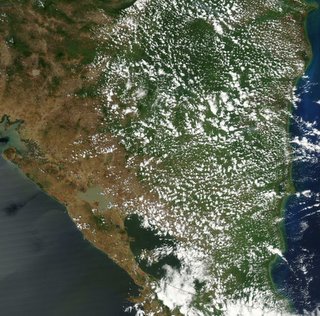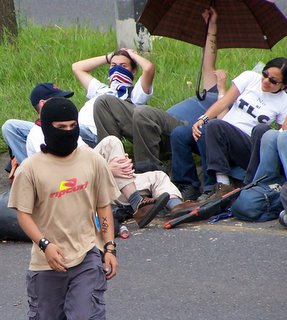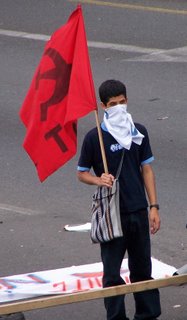Nicaragua: First Impressions

Beatriz and I spent a week in Nicaragua early last August during school break. It was the first time we set foot in the land of our calling. For three years we've been sharing about this country and its people, and finally, after much work and anticipation, we were able to experience it for ourselves. It was quite different from where we are in Costa Rica. San José and the language school are located in the mountains of what is called the Central Valley. It is almost 3,000 ft here so I'm not sure that it is much of a "valley." It is beautiful, however, and the mountains are all around us. As we flew into Nicaragua, though, we immediately noticed a change in landscape. The mountains softened into a low plane. Clearly defined farms and fields replaced rugged hills. And the rich greens turned into browns and soft greens. The entire landscape was magically tranformed. It was very different.
 We flew over Lake Nicaragua, which I mistook the Pacific Ocean (until I saw land on its west side), and then over the city of Managua. Lake Nicaragua is an incredible sight. It is long and blue. It is a fresh-water lake with, what people tell us, species of fresh-water sharks. I'm not sure we'll want to swim in the lake but it did remind me a little of Lake Erie back home. Not that there are sharks in Lake Erie. It's similar in the fact that its
We flew over Lake Nicaragua, which I mistook the Pacific Ocean (until I saw land on its west side), and then over the city of Managua. Lake Nicaragua is an incredible sight. It is long and blue. It is a fresh-water lake with, what people tell us, species of fresh-water sharks. I'm not sure we'll want to swim in the lake but it did remind me a little of Lake Erie back home. Not that there are sharks in Lake Erie. It's similar in the fact that its  fresh water, one cannot see across it to the other side, and it has pretty large waves. When I explain to Latin Americans where I'm from in Cleveland, I say it is on the coast of one of the five great lakes, Lake Erie, and that it's a little bigger than Lake Nicaragua. When I mention Lake Nicaragua to them, they immediately understand where I'm coming from. Lake Nicaragua is the largest fresh-water lake of its kind in Central America.
fresh water, one cannot see across it to the other side, and it has pretty large waves. When I explain to Latin Americans where I'm from in Cleveland, I say it is on the coast of one of the five great lakes, Lake Erie, and that it's a little bigger than Lake Nicaragua. When I mention Lake Nicaragua to them, they immediately understand where I'm coming from. Lake Nicaragua is the largest fresh-water lake of its kind in Central America.Managua is west of Lake
 Nicaragua, and it has a lake of its own. But Lake Managua is quite a contrast to Lake Nicaragua. Lake Managua is a muddy, brown-colored body of water that just sits there. It was, to be honest, remarkable ugly compared with the blue of Lake Nicaragua. We were told that Lake Managua is heavily polluted and has been for some time. What a shame. In the city, as we drove into the older part of town near the lake, we could see the lake's potential if it could only be cleaned-up. The city borders the lake's southern coast, and it is framed by mountains to the north. What potential. For now, though, the lake is foul, quite possibly a subtle reminder of years of neglect and abuse. As I think about it, it may just be a manifestation of the city itself.
Nicaragua, and it has a lake of its own. But Lake Managua is quite a contrast to Lake Nicaragua. Lake Managua is a muddy, brown-colored body of water that just sits there. It was, to be honest, remarkable ugly compared with the blue of Lake Nicaragua. We were told that Lake Managua is heavily polluted and has been for some time. What a shame. In the city, as we drove into the older part of town near the lake, we could see the lake's potential if it could only be cleaned-up. The city borders the lake's southern coast, and it is framed by mountains to the north. What potential. For now, though, the lake is foul, quite possibly a subtle reminder of years of neglect and abuse. As I think about it, it may just be a manifestation of the city itself.




